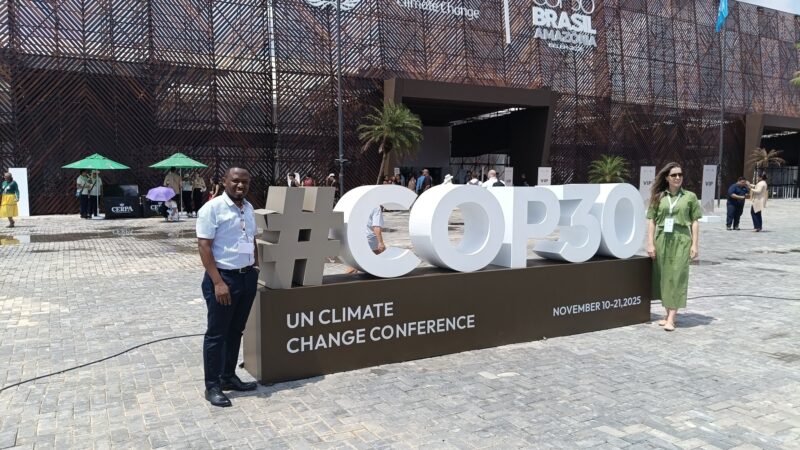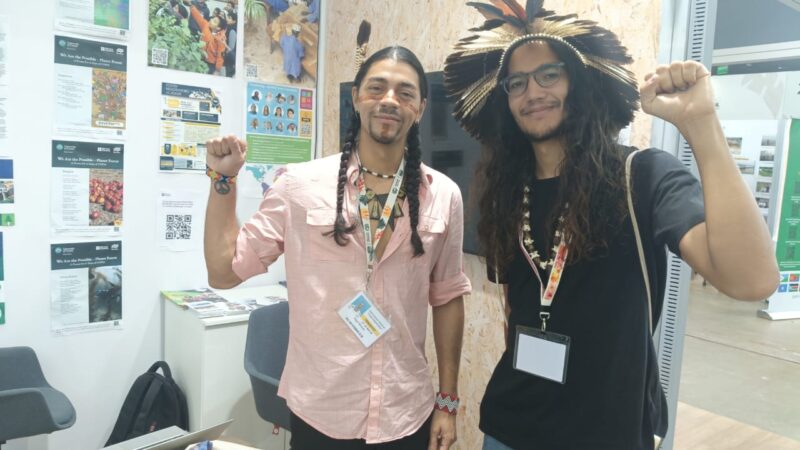
Withstanding change
Withstanding Change: Heritage Amongst Climate Uncertainty is a £2.3 million programme led by INTO and the National Trust, funded by the British Council’s Cultural Protection Fund. It brings together heritage organisations across the Middle East and Africa to protect and revitalise historic places affected by climate change.
Starting in 2022, the project is now in its final phase, running until the end of 2025. Current activities focus on strengthening climate resilience at six historic sites, improving access for local communities, and creating spaces where heritage can inspire dialogue, learning, and action on climate.
Each site is being enhanced through targeted restoration, training in traditional and sustainable skills, and community-led initiatives that connect people with their cultural heritage and environment. Together, these actions demonstrate that heritage is not just at risk from climate change — it is a vital part of the solution.
Partners
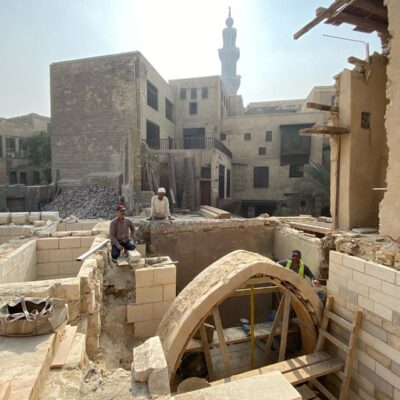
Bayt al-Razzaz is a rare example of a late 15th century private dwelling in historic Cairo. Existing conservation challenges have been exacerbated by more extreme and less predictable rainfall patterns. Flash flooding resulted in the collapse of a younger neighbouring building, causing collateral damage to the site.

The Tsegereda Gardens once formed part of the grounds of then crown prince Asfa Wossen’s residence. Stabilisation of this building and restoration of the Tsegereda Gardens, will showcase Ethiopian horticultural knowledge and demonstrate how indigenous ecological solutions can directly address climate change.
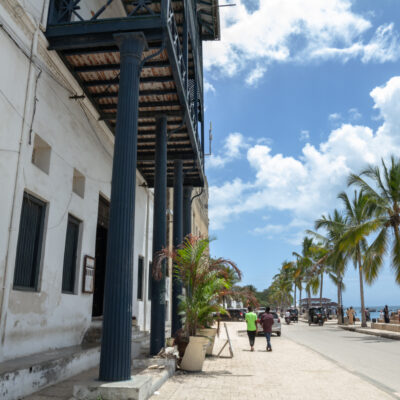
The Old Customs House is a typical Omani mansion constructed in 1865. More intense winds and wave activity, rising sea level, warming oceans, humidity and sea evaporation – all exacerbated by climate change – are posing new, and compounding old conservation challenges.
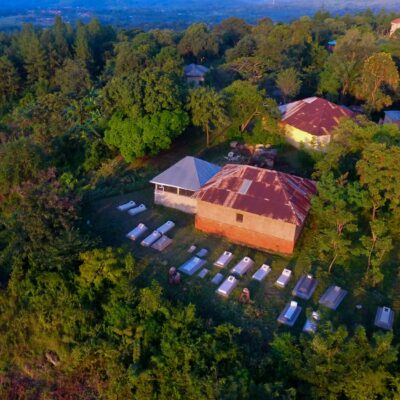
Situated just outside of Mbale, the family home and associated buildings belonging to Semei Kakungulu, an important Ugandan statesman, will be restored. There will be a museum on site and garden areas and neighbouring community landscapes will be planted with indigenous tree species.
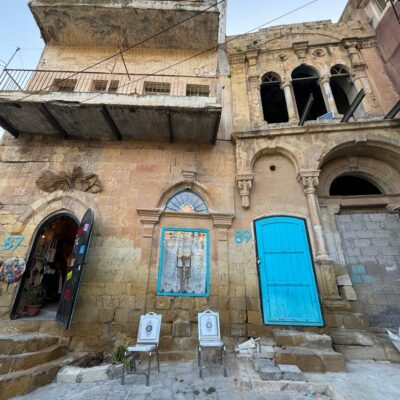
By restoring the historic Bayt al Jaghbeer, Petra National Trust will address the impact of climate damage on heritage buildings. By the re-greening of parts of the surrounding landscape, they will build on existing initiatives, strengthening livelihoods for the local community.
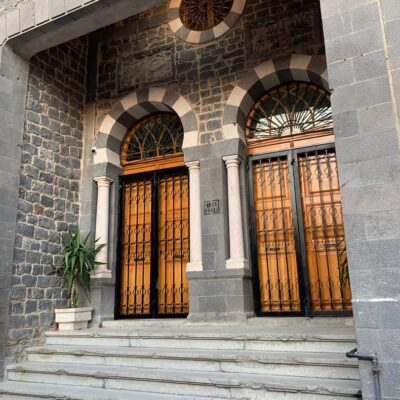
Recovery of the Ghassania Theatre in Homs showcases climate-adaptive restoration that has rebuilt community pride, provided essential power and water infrastructure, and shared climate resilient restoration knowledge locally.
Our progress
Work on the ground started in early 2023 following a two-week study visit to the UK by representatives from each project partner. This was an opportunity to meet with INTO and National Trust colleagues and experts, ask questions, share ideas, and best practices, before returning to their respective sites, to refine and develop their own project plans.
In January 2024, the INTO project team met the project partners in Cairo. Hosted by the Egyptian Heritage Rescue Foundation (EHRF), this was an opportunity to review and evaluate our progress to date, share best practice, and exchange knowledge. Since then, our partners have continued their amazing work, invigorated and energised by their shared successes and from the key learnings that they all took away.
Managing this programme is really about giving our partners the platform to do what they do best. I have been hugely impressed by their passion and capability.
In October 2024, partners and the INTO team gathered in Zanzibar, hosted by the Zanzibar Stone Town Heritage Society, to share lessons learned and explore how their restoration work was connecting communities with heritage and climate action.
Then, in December 2024, we met for the final time at the Facing Change Jordan 2024 conference – hosted in partnership with the British Council Cultural Protection Fund and Petra National Trust. The event celebrated the project’s progress to date and showcased the role of people and culture in driving climate resilience.
The Withstanding Change programme is now in its third and final year. Partners have completed restoration work across all six sites, transforming spaces once vulnerable to climate impacts into active, accessible places for learning and community use. Exhibitions, museum openings, heritage-skills training, community events and youth leadership workshops have been held across the network, turning the restored sites into hubs for creativity, education and local adaptation.
Each organisation continues to share its work through films, podcasts, exhibitions and local engagement activities that demonstrate how cultural heritage can support climate adaptation and sustainable livelihoods. The programme’s evaluation is capturing these results – from improved site resilience and skills development to enhanced wellbeing and inclusion – providing valuable evidence for how culture and heritage contribute to national and international climate goals.
The project will conclude in December 2025 with a Withstanding Change Exhibition, hosted in London. This invite-only showcase will celebrate the partners’ achievements and share lessons learned across the global heritage and climate community, opening up the conversation about why heritage belongs in every climate conversation. We hope to make the exhibition publicly available in 2026.
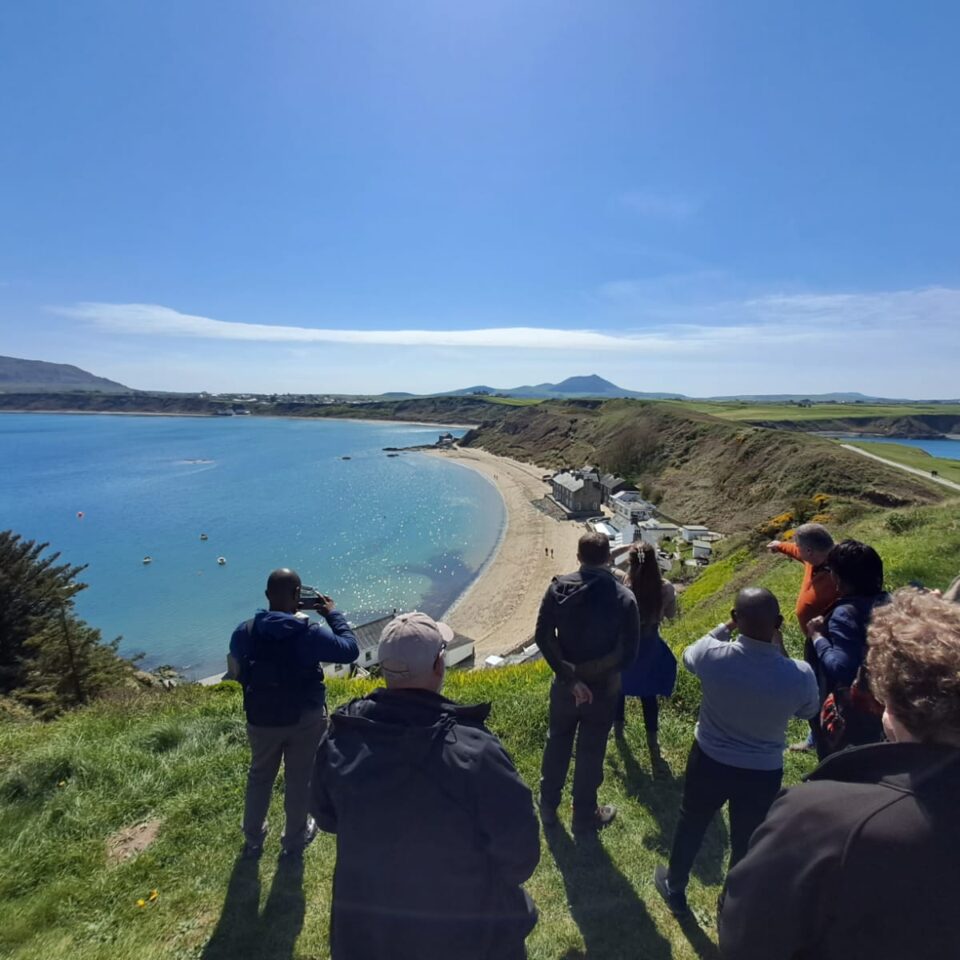




Partnerships
Each site is paired with a National Trust property in the England and Wales:
- The Cross-Cultural Foundation of Uganda – NT Stourhead
- Egyptian Heritage Rescue Foundation – NT Blicking Estate
- Heritage Watch Ethiopia Association – NT Mottisfont/Hinton Ampner
- Zanzibar Stone Town Heritage Society – NT Llyn Peninsula/Penrhyn Castle [Welsh version here]
- Petra National Trust – NT Buscot and Coleshill Estates
Coordinated by National Trust Project Manager, Katherine Shingler, the twinning relationships have developed and continue to deepen through shared concern for their respective sites and communities. They will form the platform for knowledge sharing that will continue long after the initial phase of the project has ended.
Read more on the twinning in our ‘News’ section:
- Withstanding Change: twinning takes off
- Wales and Zanzibar in twinning partnership
- Climate change, connections and koshari in Cairo
- Withstanding Change: Blickling Revisited

What makes Withstanding Change so special is the people behind it. Our partners are vibrant, dedicated and deeply committed and they care about the same things we do: protecting heritage, supporting communities and building a more resilient future. This project has shown how collaboration and shared purpose can make a real difference, and how even modest resources, in the right hands, can go a very long way.
More INTO news

